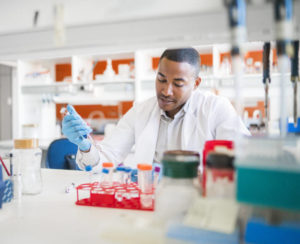
This is the third article in a series of updates on research coming out of the prestigious Conference on Retroviruses and Opportunistic Infections (CROI) held in early March 2018. In the first article, I reported the case of what appears to be a real patient cured of HIV infection. In the second article, I reported on a series of studies related to improving HIV disease therapy, highlighting some adverse effects of treatment and possible ways to improve treatments.
In this last article, I will report on a few new potential therapies. I say potential therapies because we never can predict what the future will hold. While some of these experimental drugs look good now, both in terms of effectiveness and safety, we could see problems in larger studies that could halt their development.
We've had some great drugs and got some new ones in 2018 (see Closing out 2018 with a Review of Some of Our Successes in HIV Medicine), but new drugs are ALWAYS needed to stay one step ahead of viral development of resistance to these powerful medicines.
Gilead Sciences is developing a new product, identified as GS-6207, as a long-acting treatment for HIV infection. This drug belongs to a totally different class of HIV drugs and works differently. It belongs to a class of experimental drugs called capsid inhibitors. The capsid is a specialized protein that protects the genetic material of the virus. These experimental drugs disrupt the capsid and interfere with the ability of virus to infect a blood cell (lymphocyte) and also to make new viruses.
Research presented at the conference shows that this compound GS-6207 is extremely potent against a wide variety of viral strains found throughout the world. It also can suppress viruses that are resistant to other HIV drugs, a very important property. And because it works differently, it is even more effective when combined with other approved HIV drugs. This is all very promising.
Another study actually administered the drug to people who were not HIV infected in order to study how the drug behaves in the body and how to best dose it (Phase 1 study). The drug is administered subcutaneously, which is injected under the skin similar to the way insulin is given in diabetes. But unlike insulin, the study shows that GS-6207 may only have to be taken every 3 months! The drug was also shown to be safe and the people in the study had no complaints. There’s only more piece to the puzzle:
Does it work in HIV patients?
Those studies are just now beginning and we hope to have some answers soon. Keep your fingers crossed.
Another investigational drug developed by Glaxo Smith Kline also belongs to a totally new class of experimental HIV drugs called maturation inhibitors. Essentially, when a virus infects a cell and starts reproducing itself, the maturation inhibitors block the assembly of new viruses. There are no new viruses released from the lymphocytes that can infect other cells.
In this small study, HIV-infected patients received different doses of the experimental drug for 11 days to see how well it could suppress virus all by itself. This drug alone reduced the amount of virus in the blood on average by about 40-fold; not bad for a single drug over a short period. These short studies give us an indication of how strong the drug is by itself and how it will perform when combined with other HIV drugs. Side-effects were mild.
There is very good news on the Prevention front. Currently, the only drug we have approved is a pill called Truvada which is a combination of two drugs, Tenofovir and Emtricitabine. This pill is prescribed daily in people who do not have HIV infection to protect them from getting infected. This type of protection is called pre-exposure prophylaxis or PrEP (see I want protection from PrEP).
Tenofovir is a powerful drug and it is commonly included in combination treatment products. However, recently, a new form of the drug Tenofovir has become available, called Tenofovir Alafenamide (found in products like Genvoya and Bictarvy). In the body, it works exactly like Tenofovir (because it is tenofovir). However, this drug is designed with some special features. When a patient takes the drug, it is absorbed into the bloodstream, but quickly is transported into tissues, including blood cells that HIV infects, where it reaches very high concentrations.
These characteristics produce two important benefits. First, because the Tenofovir doesn’t linger or reach high concentrations in the blood, the side-effects from Tenofovir are much lower. Second, because the concentration of the drug is high in tissues, the protective effects from Tenofovir Alafenamide may be greater and last longer than compared to Tenofovir.
So in a very large study with over 5,000 gay men, randomly assigned to take either Truvada or Tenofovir Alafenamide/Emtricitabine (TAF/FTC) daily for PrEP, both combinations were extremely effective in preventing transmission of HIV. With tens of thousands of unprotected sex acts over a year, there were 15 cases of HIV infection in the Truvada arm but only 7 infections in the TAF/FTC arm.
These infection rates are much lower than we would observe if PrEP wasn’t being used. While the TAF/FTC arm appears to provide better protection, we cannot state that with absolute certainty, based on the statistical analysis. But there is certainly a strong suggestion the TAF/FTC may be better than Truvada. It is important to keep in mind that in the cases where the men got infected, they were not taking all of their PrEP doses properly.
Again, this reminds us that PrEP works to protect from HIV infection WHEN PEOPLE TAKE IT! It works for heterosexuals, gay men, intravenous drug users; every group that has been studied. Hopefully, this study can help TAF/FTC gain approval for use as PrEP.
 Dr. Crawford has over 25 years of experience in the treatment of HIV. While at Howard University School of Medicine, he worked in two HIV-specialty clinics at Howard University Hospital. He then did clinical research as a visiting scientist with the AIDS Clinical Trials Group (ACTG) at Johns Hopkins University School of Medicine. He served as the Assistant Chief of Public Health Research with the Military HIV Research Program where he managed research studies under the President’s Emergency Plan for AID Relief (PEPFAR) in four African countries.
Dr. Crawford has over 25 years of experience in the treatment of HIV. While at Howard University School of Medicine, he worked in two HIV-specialty clinics at Howard University Hospital. He then did clinical research as a visiting scientist with the AIDS Clinical Trials Group (ACTG) at Johns Hopkins University School of Medicine. He served as the Assistant Chief of Public Health Research with the Military HIV Research Program where he managed research studies under the President’s Emergency Plan for AID Relief (PEPFAR) in four African countries.
He is currently working in the Division of AIDS in the National Institutes of Health. He has published research in the leading infectious diseases journals and serves on the Editorial Board of the journal AIDS. Any views and perspectives in his articles on blackdoctor.org are not representative of any agency or organization but a reflection of his personal views.









